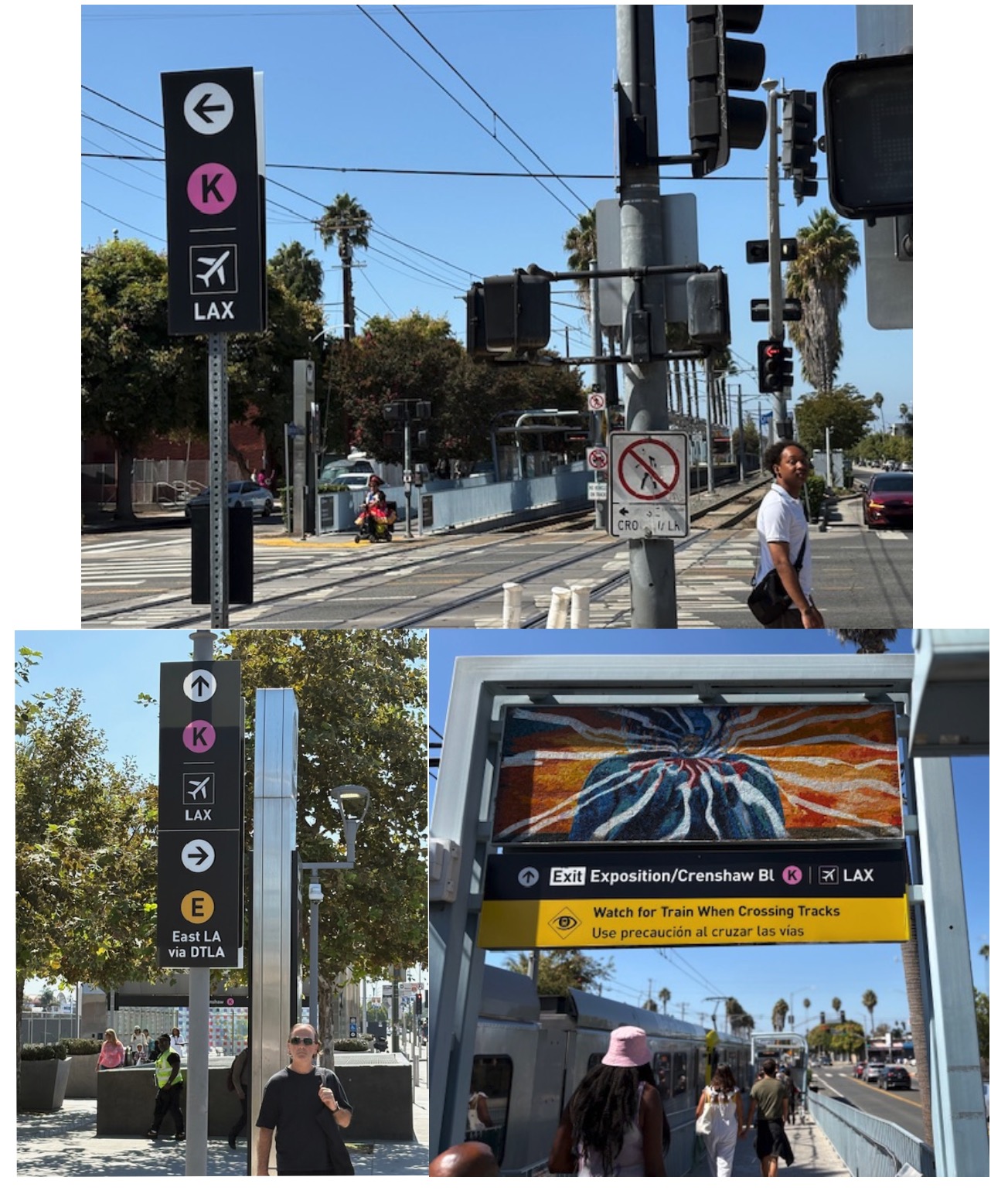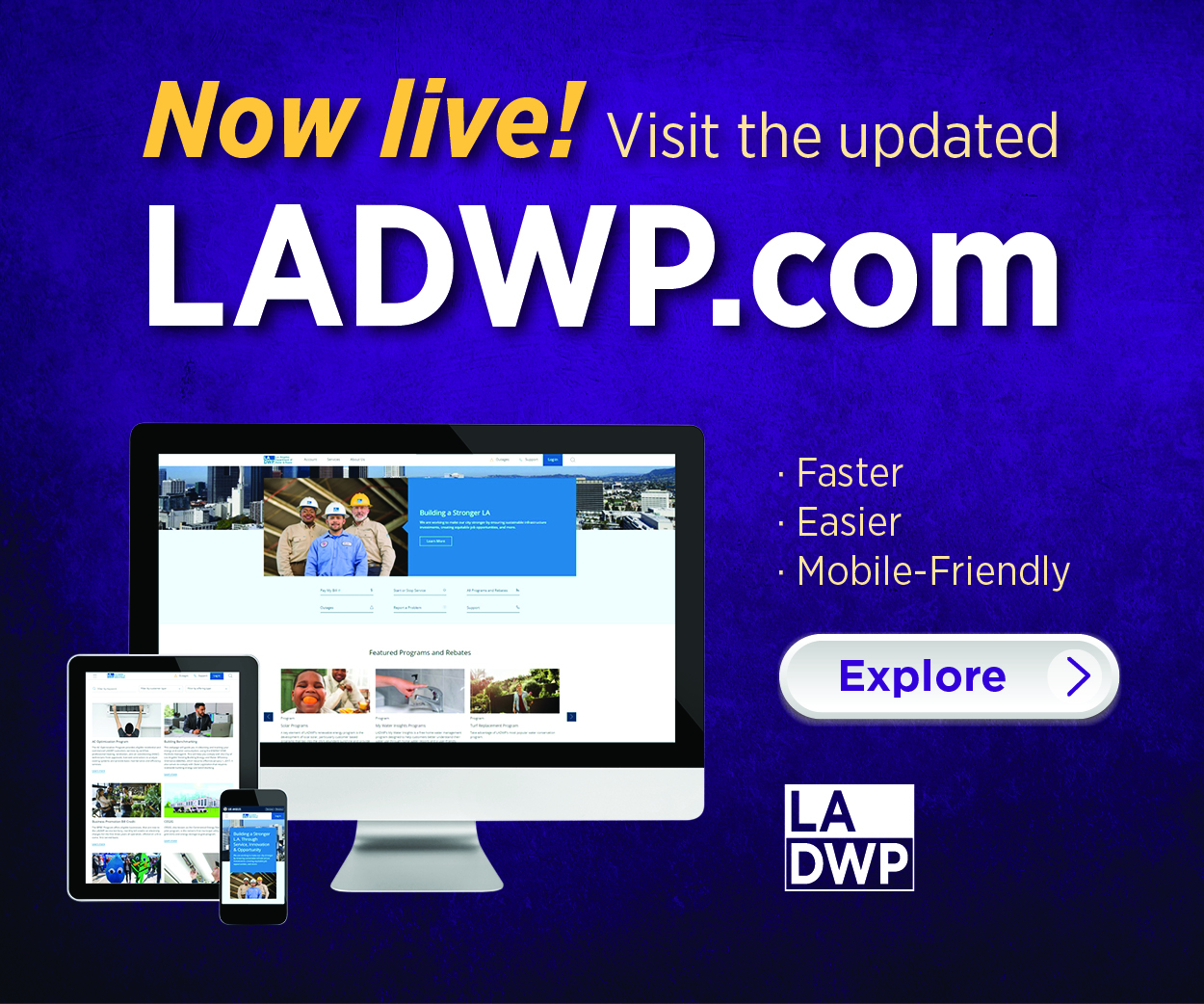Comments
LA TRANSPO - Those involved in the creation and implementation of the LAX Transit Center, Metro and LAWA/LAX, surely must have known that they would need to incorporate the Expo/Crenshaw Station into the flow of transit riders to LAX. Yet, despite years of planning of the LAX Transit Center, the idea of thinking on who these transit riders would be, and how transit they would use that station seems to have not crossed their collective minds.
It seems the planning of the Crenshaw Line and Expo/Crenshaw Station was just copy and paste, copy what was already used, with no thought on the uniqueness of this station and how people would use it.
Before the opening of LAX Transit Center on June 6, 2025, the Crenshaw Line, and the Expo/Crenshaw Station, was lightly used. The trains and stations were very clean. (They remain clean on my last rides this week.) Once the LAX Transit Center opened, transit ridership increased dramatically, as it should. The importance of the Crenshaw Line and the Expo/Crenshaw Station should not have been overlooked by Metro and LAWA/LAX. But until recently it was.
Sometimes I ride the K/Crenshaw Line from the Expo/Crenshaw Station to the LAX Transit Center four times a week. Constantly I would see transit riders getting off the Expo Line and struggling to see where that critically important transfer station to the Crenshaw Line was located.
These transit riders would be staring into their mobile devices with the most quizzical, and anxious faces. They were in strange lands, looking for a train station and not seeing it. The station was probably fifty yards away, but there were no signs confirming the train they needed to catch their flight at LAX was very close. The only signs were for the Expo and Crenshaw Lines.
As much as I could, I would try to help these people to find the train to LAX.
For some reasons the sign department at either LAWA/LAX, or Metro, or both, decided to not follow the age old practice of using signs above ground, but use decals on the ground.
At the Expo/Crenshaw Line Station platform I would see transit riders with suitcases frantically looking for indications and directions for the train to take them to LAX. They would look around the station while standing on the decals on the floor. They would walk over the decals while trying to make certain that the train on the tracks would take them to LAX. These decals did not communicate efficiently, if at all.
This created great stress and anxiety, and was not hospitable to transit riders, some of whom may be residents and bravely trying the Metro Network for the first time, or from other parts of California, other parts the nation, or from a foreign country. All were guests to the newly build system to get them to LAX, and the hospitality was very cold.
Finally, within the past few week, sensible, easy to read signs have been placed around, at, and in the Crenshaw/Expo Station. At the Expo Station along Exposition Boulevard, there above ground signs directing transit riders to the Expo/Crenshaw Station. Then, a new, nicely designed post on the station plaza gives direction to the station to get to the Crenshaw Line take them to LAX. On the station concourse as one descends the escalator to the station floor are clear signs that the train on the tracks, or soon to be arriving, will take them to LAX.

I am not using the elevators at the Expo/Crenshaw Station so I don’t know how the signage works for those using the elevators.
But the issues remain, why were signs explicitly giving directions to transit riders at the Expo/Crenshaw Station not in place when the LAX Transit Center opened?
This lack of planning and foresight on how transit riders would use the Expo and Crenshaw Lines to get to LAX is an ongoing problem. It is a continuing, glaring weakness of Metro signage. At the 7th Street Metro Center, used by the Expo and Blue Line light rail trains, and the B and D Line subways, signs that are readable, understandable and correct in directions have been missing, lacking, or confusing for years. This is an ongoing issue at Metro and reflects badly on the organization, and the city and county whose officials make up the Metro Board of Directors.
As a native to Los Angeles, I am very excited about the growing light rail and subway networks of Metro. The area is slowly, incrementally pivoting away from vehicle centric Los Angeles to an increasing light and heavy rail network.
I am a regular transit rider since 1993, riding buses, trains and subways to first reduce throwing more pollution in the air to fight air pollution in the Los Angeles Basin, and now to do my part to fight the increasing looming threats of global warming and climate change by reducing my carbon footprint. One of the greatest sources of global warming carbon gases are from vehicles.
My quest to reduce my carbon footprint remains despite the anxiety, and at times chaotic of Metro signage.
The construction of light rail trains and subways is not the end of the projects. There must be great thought, and forethought, on the reasons for the lines and their stations and destination, and how people will use the network.
Clear, concise, easy to find signs, thought of well in advance to the construction of Metro Rail projects must be part of the planning from inception to completion. The most important component of any transit line are the people riding them, yet, at Metro, giving transit riders clear directions seems to be a missing equation.
(Matthew Hetz is a Los Angeles native and composer whose works have been performed nationally. He is the former President of the Culver City Symphony Orchestra and Marina del Rey Symphony. A passionate transit advocate, Matthew is dedicated to improving the rider experience and encouraging drivers to embrace public transportation as a solution to air pollution and climate change. He teaches at Emeritus/Santa Monica College and is a regular contributor to CityWatchLA.com.)
















